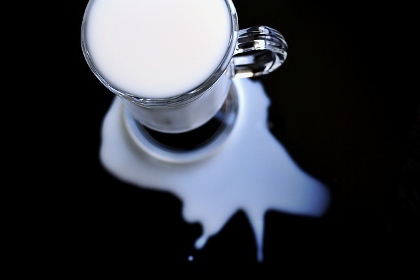
Crying Over Spilled Milk
The U.S. food system is set up to protect industrialized, centralized food production and distribution, while efforts to decentralize food are kept strictly under wraps.
There are many problems with this system, including the fact that food production is often out of sync with demand, leading to excessive amounts of waste. In 2016, for instance, the industrial dairy industry has dumped 43 million gallons of milk due to a massive milk glut.
October 25, 2016 | Source: Mercola.com | by Dr. Joseph Mercola
The U.S. food system is set up to protect industrialized, centralized food production and distribution, while efforts to decentralize food are kept strictly under wraps.
There are many problems with this system, including the fact that food production is often out of sync with demand, leading to excessive amounts of waste. In 2016, for instance, the industrial dairy industry has dumped 43 million gallons of milk due to a massive milk glut.
The glut is the result of a 2014 spike in milk prices, which encouraged many dairy farmers to add more milk cows to their farms. U.S. Department of Agriculture (USDA) data shows that dairy cows have increased by 40,000 in 2016, with a 1.4 percent increase in production per cow.
With too much milk and nowhere to sell it, prices have tanked. Milk prices declined 22 percent in recent months to $16.39 per 100 pounds — a price so low some farmers can no longer afford to even transport it to the market.1
The milk glut isn’t only affecting the U.S., either. It’s been felt globally, which means milk producers can’t export their surplus milk. What’s a dairy farmer to do with a surplus of milk? Dump it — on fields, into animal feed or added to manure lagoons.
USDA Steps in to Bail Out Dairy CAFOs
At its foundation, the milk glut is the result of dairy operations in the U.S. consolidating into concentrated feeding operations (CAFOs) — massive industrial “farms” with the sole goal of producing as much food as possible for the greatest profit. As reported by Yale Environment 360:2
“While milk carton imagery pictures bucolic, small farms, more than 50 percent of U.S. milk is now produced by just 3 percent of the country’s dairies — those with more than 1,000 cows, according to the U.S. Department of Agriculture (USDA).The very largest U.S. dairies now have 15,000 or more cows.”
The USDA, meanwhile, is coming to bail out these massive industrial enterprises. They’ve offered to buy $20 million of cheddar cheese from private sources, while milk producers try to get fast food outlets to add more cheese-heavy products to their menus.3 The USDA already purchased $20 million of cheddar cheese in August 2016.
1 in 4 US Dairy Cows Contracts Mastitis
Dairy cows raised in confinement and fed unnatural diets of genetically engineered (GE) grain are at high risk of illness, as are all animals raised in CAFOs. It’s estimated that one-fifth of livestock are lost due to diseases, which is an unrecognized source of food waste.4
In the U.S. alone, 1 in 4 dairy cows contracts mastitis, which is a painful and serious udder disease. The result of producing large quantities of low-quality milk, mastitis is also the leading cause of therapeutic antibiotics treatment in U.S. dairy animals.
In an era where antibiotic-resistant disease is taking millions of lives, any preventable causes of antibiotics usage should be curbed. Mastitis is also preventable with clean, humane living conditions and proper diet, which lead to healthy cows.
Mastitis is also another source of food waste. Milk with antibiotic residues cannot be sold, so milk from cows being treated with antibiotics for mastitis must be poured down the drain — to the tune of 1.2 billion servings a year (not to mention the addition of more antibiotics into the environment).5
As noted by one study on antibiotics usage on a dairy CAFO in New York state, “One of the best options to decrease antibiotic usage is to prevent the infection in the first place …”6 Indeed, which again brings us back to the way cows are raised. CAFOs are literal breeding grounds for infection.
Further, according to the 2016 Global Agricultural Productivity (GAP) Report prepared by the Global Harvest Initiative, once a cow contracts mastitis, she will probably not produce as much milk as before:7
“In addition, the cow’s level of milk production through her entire life cycle will likely fall below her potential as she is more susceptible to contracting mastitis on a recurring basis.
The need for alternatives to protect the health of animals and preserve the long-term effectiveness of shared-class antibiotics has never been greater.”
